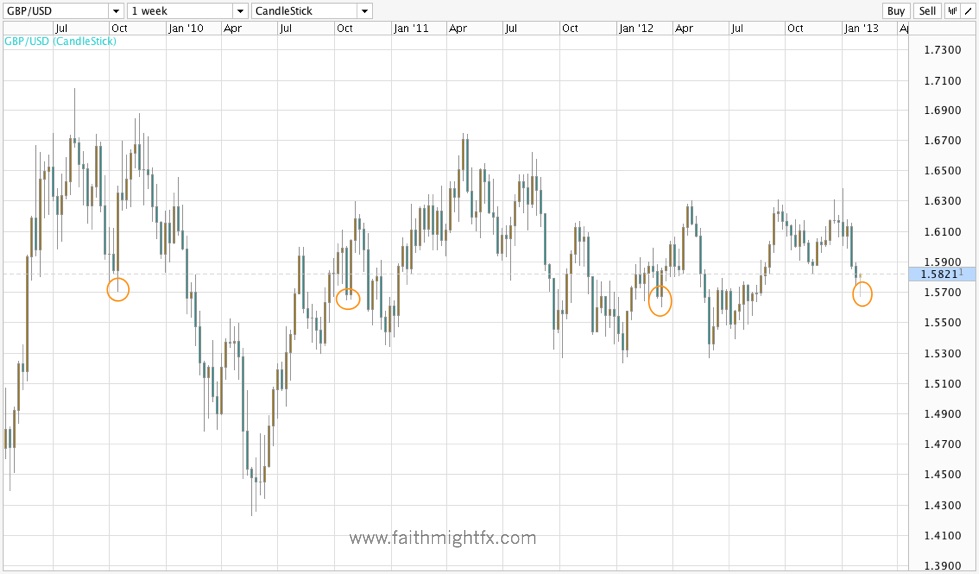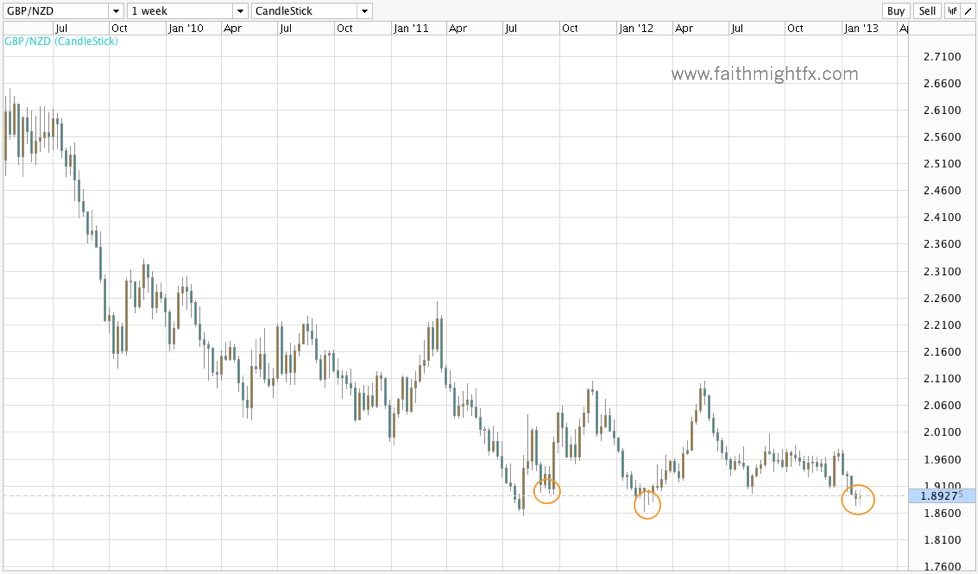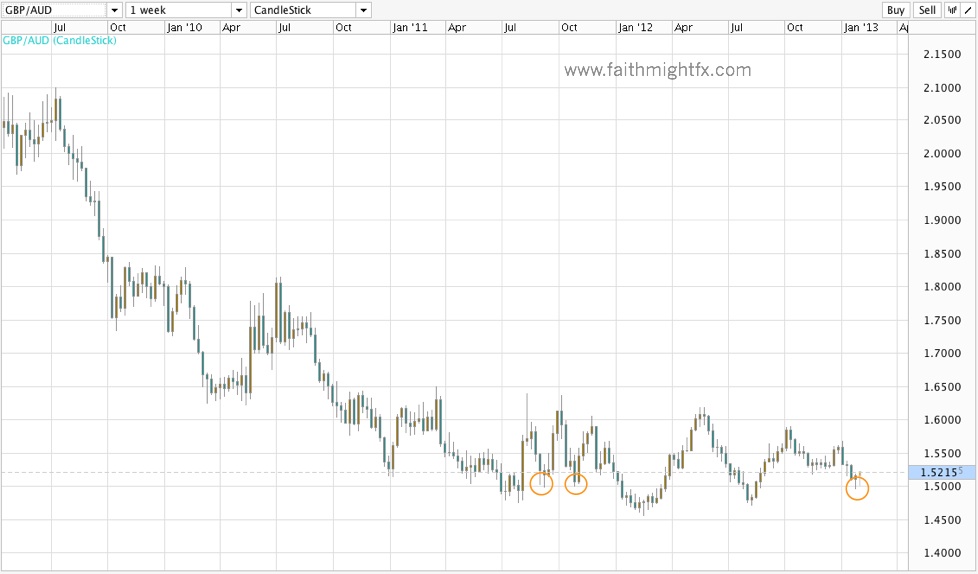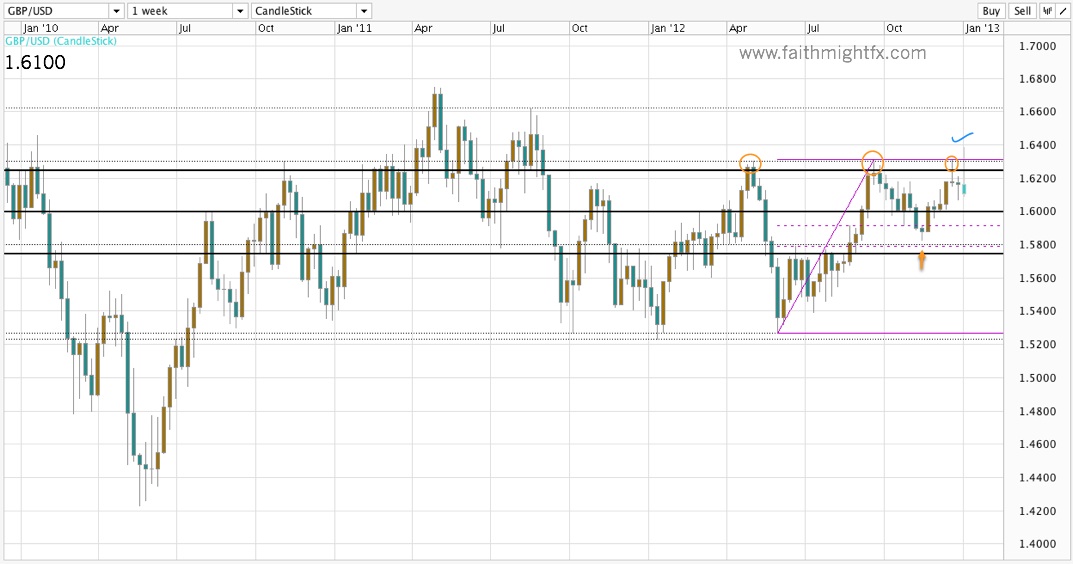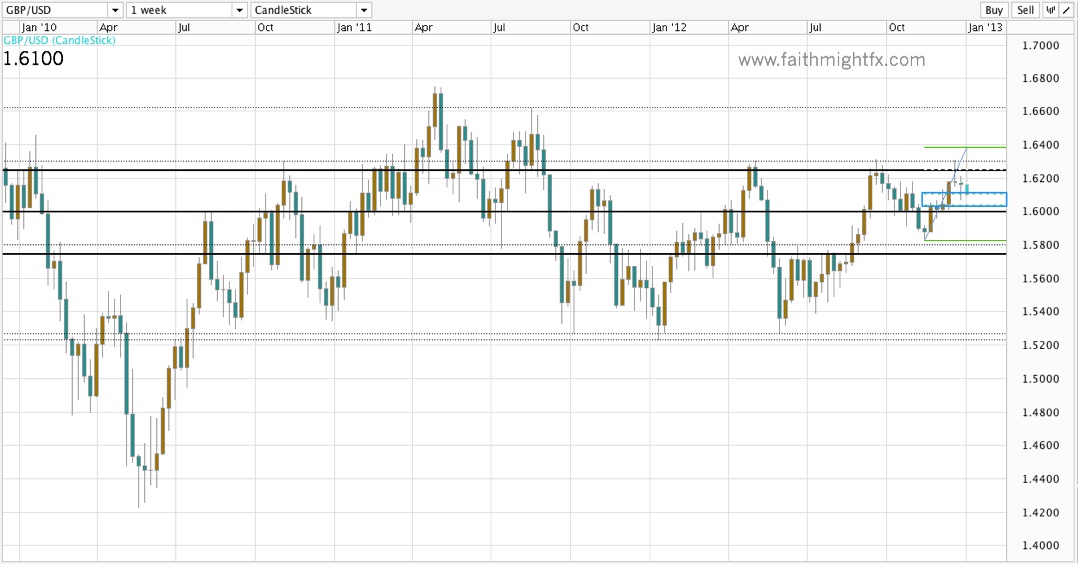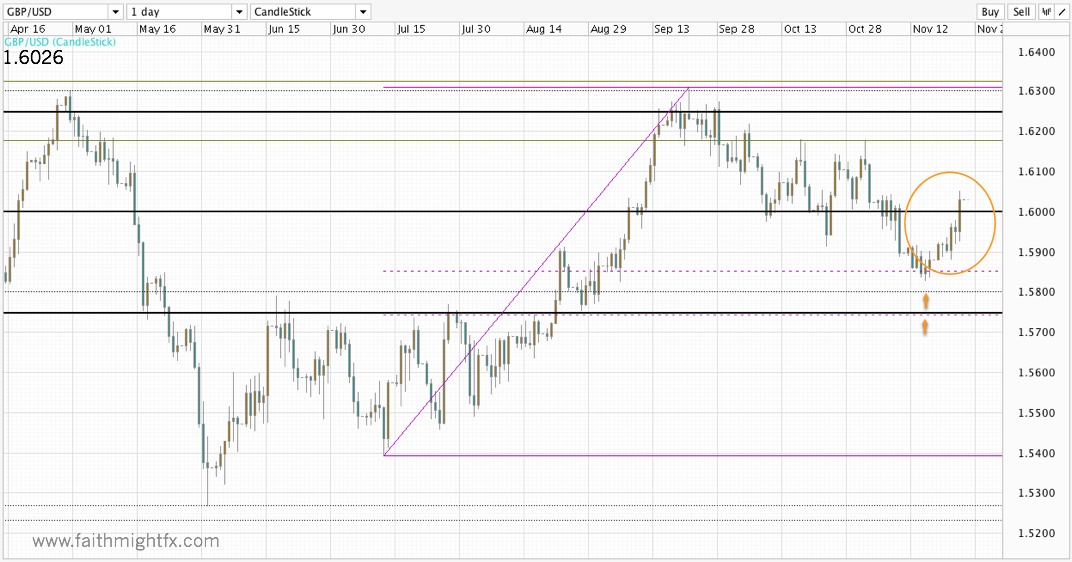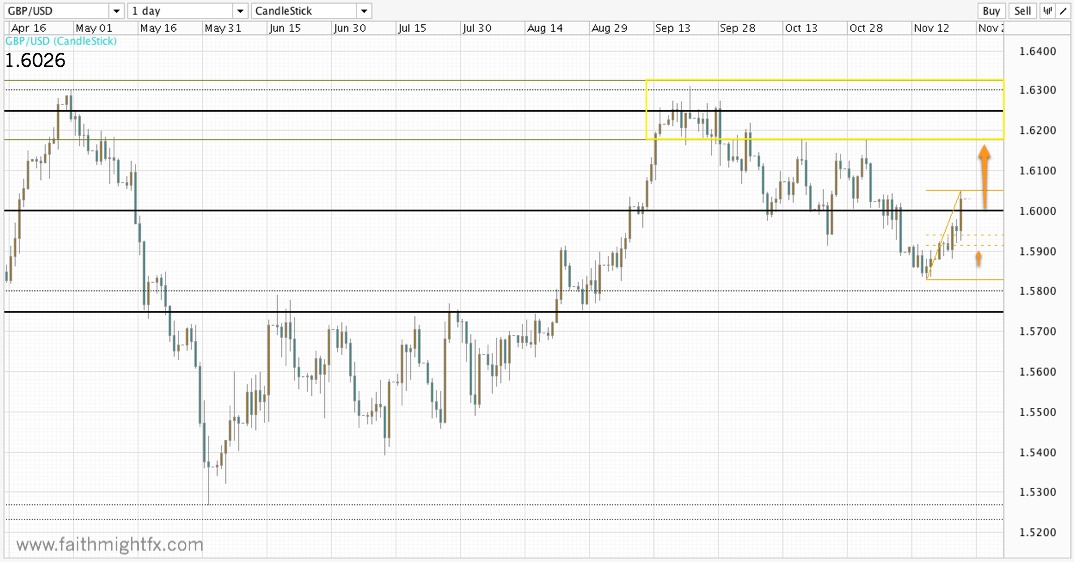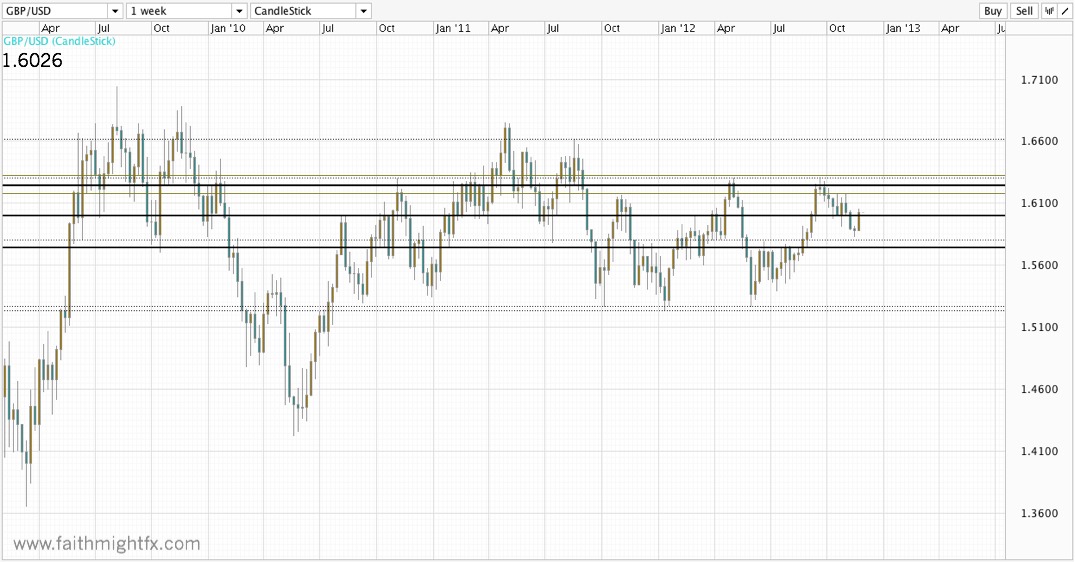
GBP ended last week in consolidation as the technicals were helped in large part to the fundamentals when UK economic data surprised on the strong side and incoming B0E governor Carney surprised markets by steering clear of his dovish Davos comments on monetary policy. All this helped sterling rally last week to new highs across the board. This week holds a light economic calendar from the UK which may allow sterling to continue its consolidation rally. However, watch the current market sentiment to change on a whiff of bad news. With CPI, retail sales, and the BoE Inflation Report out this week, any of these news events has the potential to send sterling back on its long term bear trend.
- Growth targets hit again as ‘big squeeze’ goes on (The Telegraph)
- BoE warns on inflation as it reinvest QE proceeds (The Telegraph)[Read the full statement]
- Central bankers centre-stage (Money Supply)
- Bank of England governor-designate Carney draws battle lines but recognizes uphill struggle (Euro Money)
- Fitch: UK Faces ‘Significant’ Risk of Downgrade (CNBC)
- U.K. LESSON: AUSTERITY LEADS TO MORE DEBT (The New Yorker)
